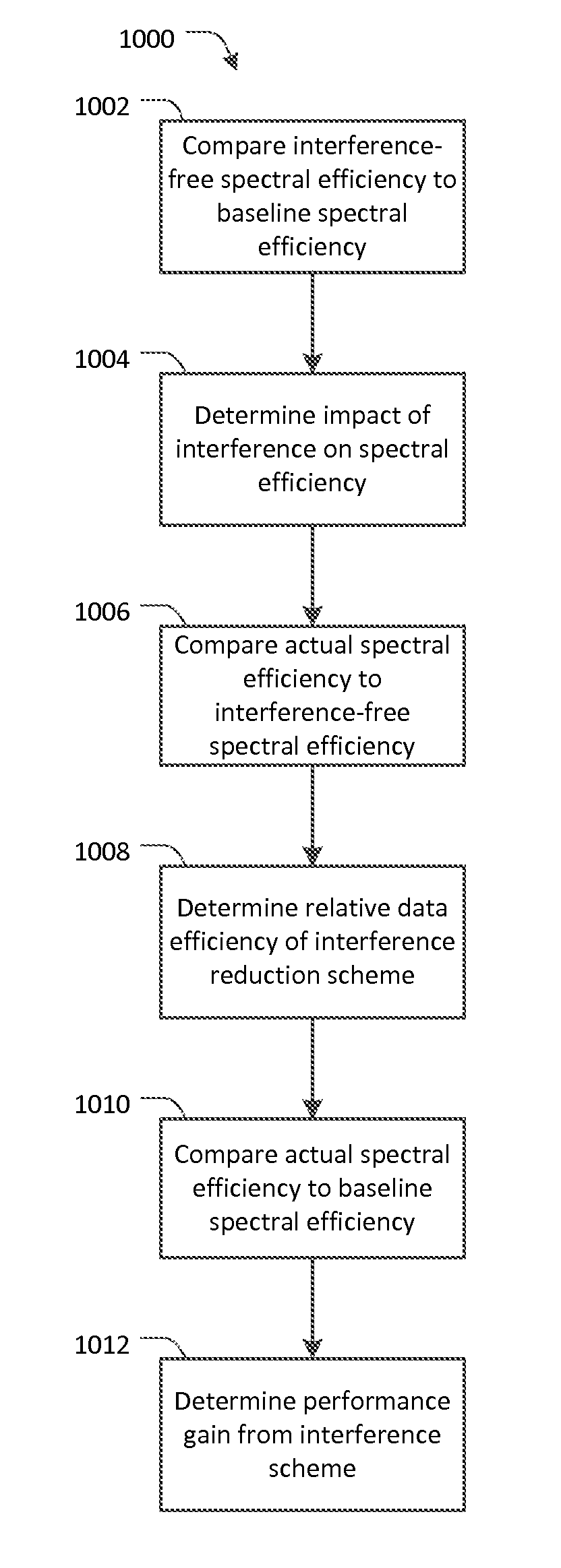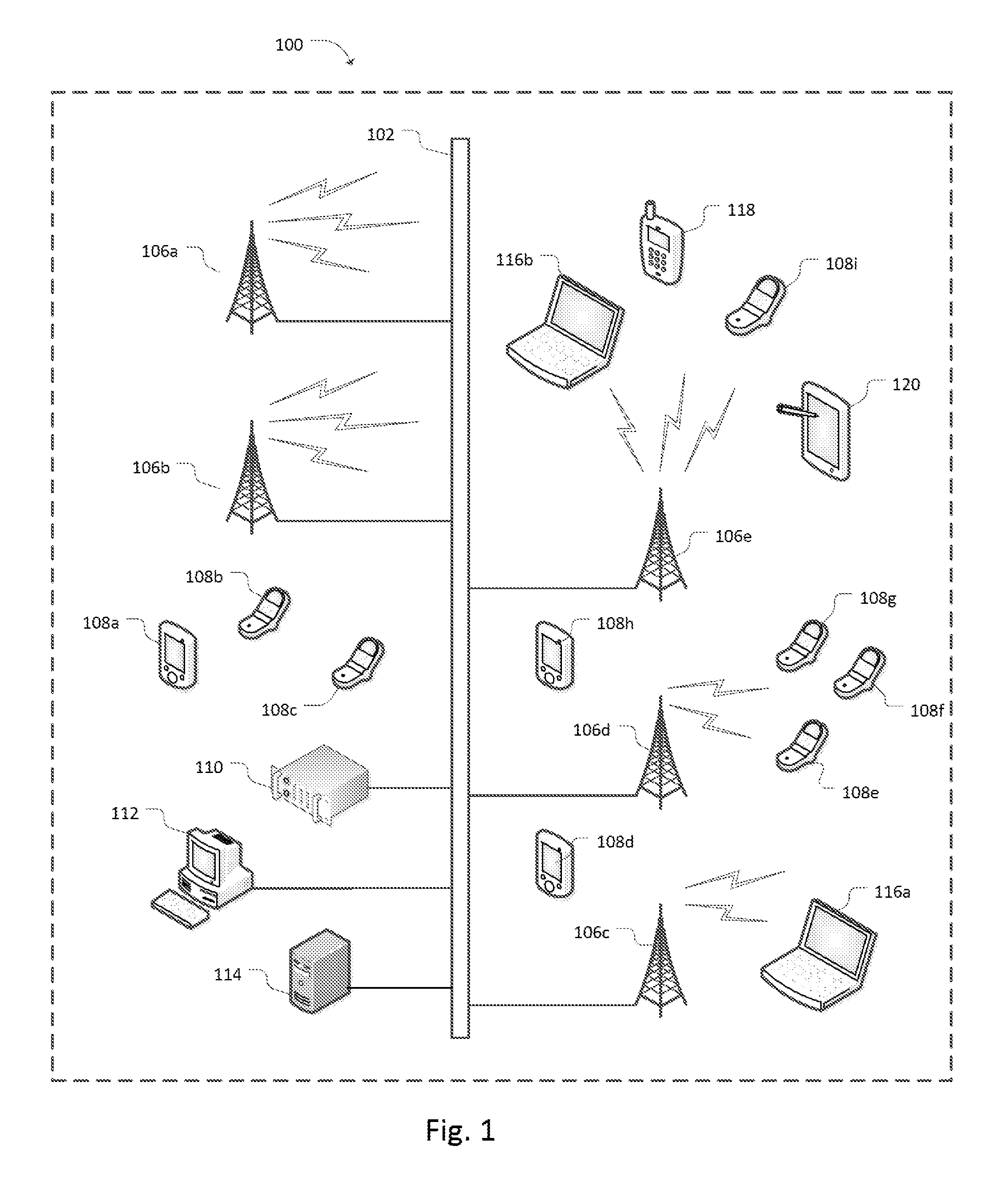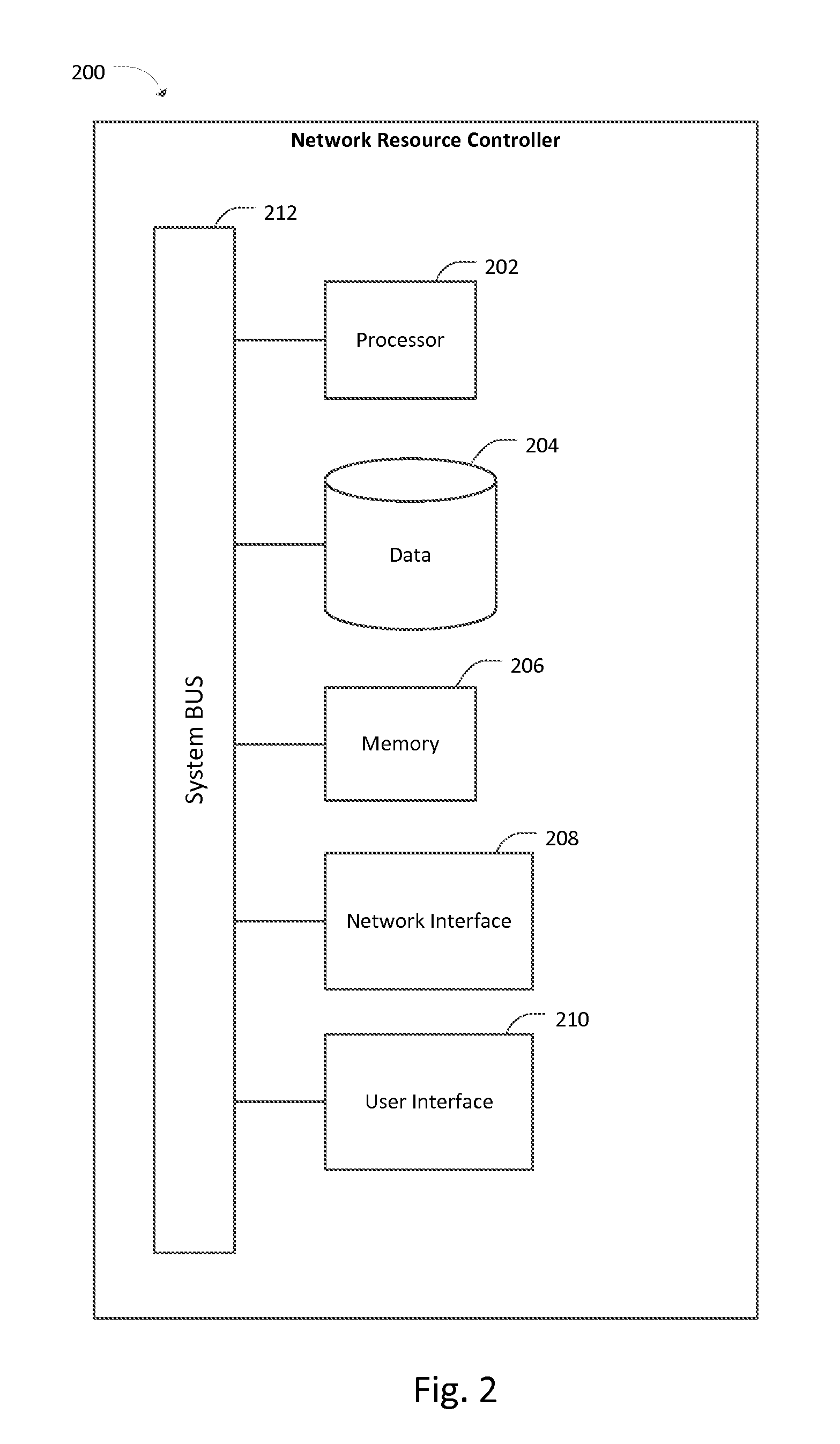Method and apparatus for measuring multi-cell data efficiency in link adaptive wireless networks
a multi-cell data efficiency and wireless network technology, applied in electrical equipment, wireless commuication services, wireless communication, etc., can solve the problems of poor performance, high interference, and substantial degraded network performan
- Summary
- Abstract
- Description
- Claims
- Application Information
AI Technical Summary
Benefits of technology
Problems solved by technology
Method used
Image
Examples
Embodiment Construction
[0028]Embodiments of the present invention relate to quantifying the performance of interference management schemes, or interference reduction schemes, deployed across a cellular wireless communication network. Embodiments of the present invention may be practiced while the network is operating and the interference reduction scheme is enabled. In particular, embodiments include calculating spectral efficiency values and estimates for actual spectral efficiency, spectral efficiency in the absence of an interference reduction scheme, and spectral efficiency with no interference in the network. Spectral efficiency can be calculated for a single base station or a cluster of base stations. Spectral efficiency values can be compared to one another in order to determine network performance characteristics.
[0029]FIG. 1 illustrates an exemplary networked computing system 100 including various wired and wireless computing devices that may be utilized to implement processes associated with var...
PUM
 Login to View More
Login to View More Abstract
Description
Claims
Application Information
 Login to View More
Login to View More - R&D
- Intellectual Property
- Life Sciences
- Materials
- Tech Scout
- Unparalleled Data Quality
- Higher Quality Content
- 60% Fewer Hallucinations
Browse by: Latest US Patents, China's latest patents, Technical Efficacy Thesaurus, Application Domain, Technology Topic, Popular Technical Reports.
© 2025 PatSnap. All rights reserved.Legal|Privacy policy|Modern Slavery Act Transparency Statement|Sitemap|About US| Contact US: help@patsnap.com



